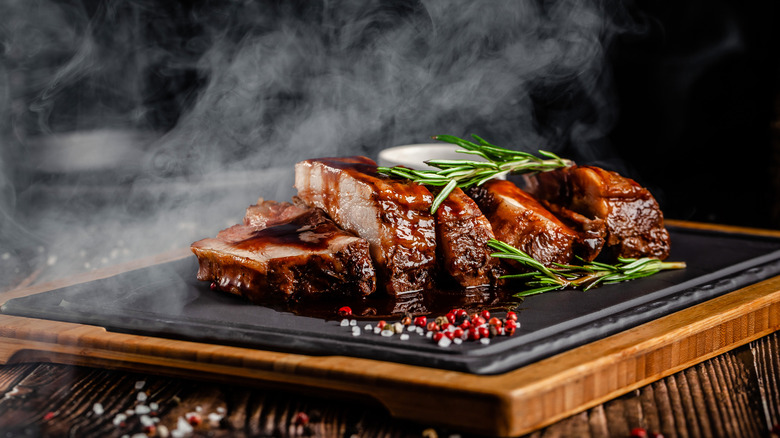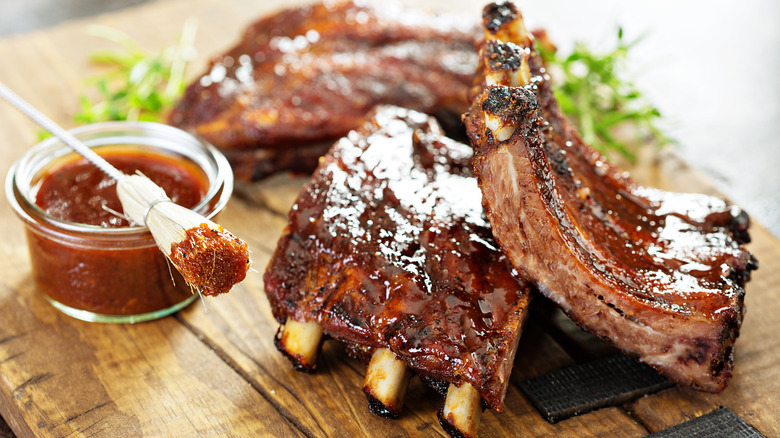How The 3-2-1 Barbecuing Method Could Improve Your Ribs
The days are slowly getting longer, the weather's getting warmer, and all across the country, people are trading in sweatpants for shorts. You know what that means, don't you? Barbeque season is almost upon us and soon everyone will be firing up the outdoor grills. Nothing washes away those winter blues like some sauce-drenched pork ribs sizzling on a hot propane or charcoal grill.
It's not unusual to be a little worried that your barbeque skills have gotten a bit rusty over the winter. You might be hyped up to make some delicious, tender ribs, but may need a refresher or a new recipe. If you want to ensure that those succulent, juicy hunks of pork don't turn into dried leather with sauce on them, The Spruce Eats has your back. The outlet shares an easy way to ensure that your ribs will still have a juicy, melt-in-your-mouth texture that's perfect for both first-timer grill masters and backyard barbeque veterans.
The 3-2-1 method is a six hour process
If you're looking for a way to whip up quick ribs, the 3-2-1 method isn't for you. This recipe takes six hours but ensures moist and tender ribs. First prepare your ribs with the rub of choice before smoking for three hours, uncovered, at a low temperature. Both The Spruce Eats and Pit Boss recommend smoking the ribs at 225 degrees Fahrenheit, though others, such as Primal Gourmet, suggest a temperature of 180 degrees Fahrenheit, depending on the type of grill you have.
After smoking for three hours, remove the ribs from the smoker and wrap them in foil before placing them bone-side up back in the smoker for another two hours. This, The Spruce Eats says, allows the ribs to become "steamed," making them more tender from the moisture, as the foil acts as a pocket to keep moisture from escaping. The third step has you unwrap the ribs and smoke them bone-side down for one hour. At the thirty-minute mark, a sauce of choice can be applied to the ribs. At the end of the hour, the ribs should have an internal temperature of 145 degrees Fahrenheit and they will be incredibly tender.
While the method is a seriously delicious way to make ribs that fall off the bone, The Spruce Eats suggests that this may not be for those who want a rib that holds the bone instead.

